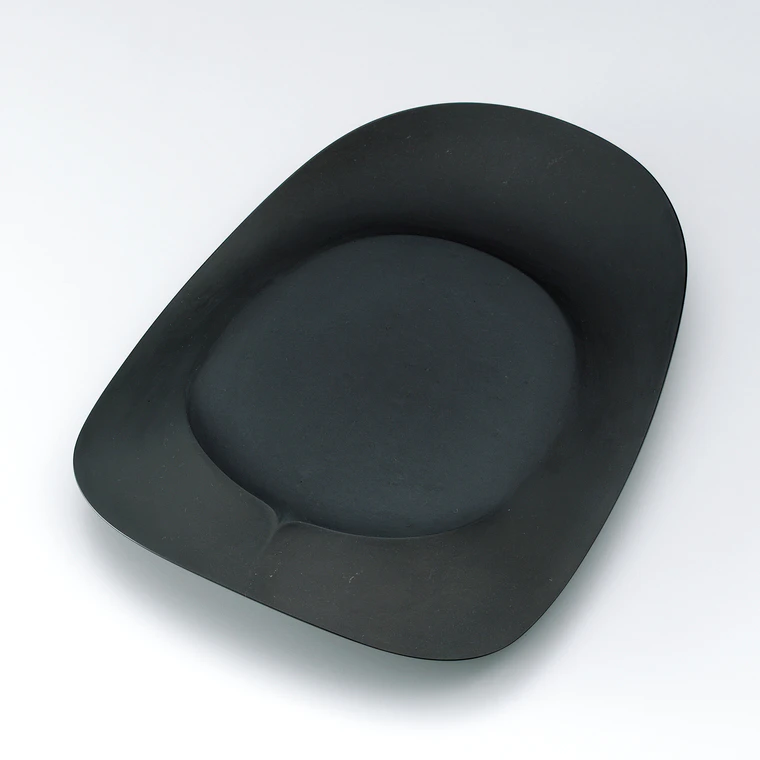“The Sun” inkstone.
H 4.0 x W 19.0 x D 26.5 cm,Year.2013- Inkstone carving
-
Price Range
$5,500 or more
Info
The prices of the artworks on Gallery Japan are determined by the artists themselves and are published directly on the website.
close - Awards at Japan Kōgei Assoc. Exhibitions : 8
About the Artwork
I try to design the "spirit" we have in the Japanese culture that we have developed throughout our long history. I expressed the moon and the sun, night and day, the sky and the sea, the flow of time and adoration towards nature in this piece.
Description
-
CategoryInkstone carving
-
MaterialsHomei Stone (Aichi Prefecture, Horaiji Mountain)
-
DimensionsH 4.0 x W 19.0 x D 26.5 cm
-
Year presented2013
-
RarityUnique
Techniques Used
Inkstone carving
Inkstones are used in brush calligraphy to grind the ink for writing characters. Inkstones are highly valued writing tools, and the process of ink grinding is regarded as a calming practice preceding calligraphic activities. First, the rough shape of the inkstone is cut out of the base rock. Next, a long-handled chisel is used to cut a flat surface where the ink will be ground and a well where the ink will gather. The final form is coated with a finish of wax or lacquer. Popular varieties of stone include Amehata slate (amehataishi) from Yamanashi prefecture, akamaishi schalstein from Yamaguchi prefecture, and hōmeiseki shale and slate from Aichi prefecture.
Awards received
- The 60th Japan Traditional Kōgei Exhibition (2013)
- Japan Kōgei Association Incentive Award
Please feel free to contact us to commission work, check artworks available for purchase etc.

